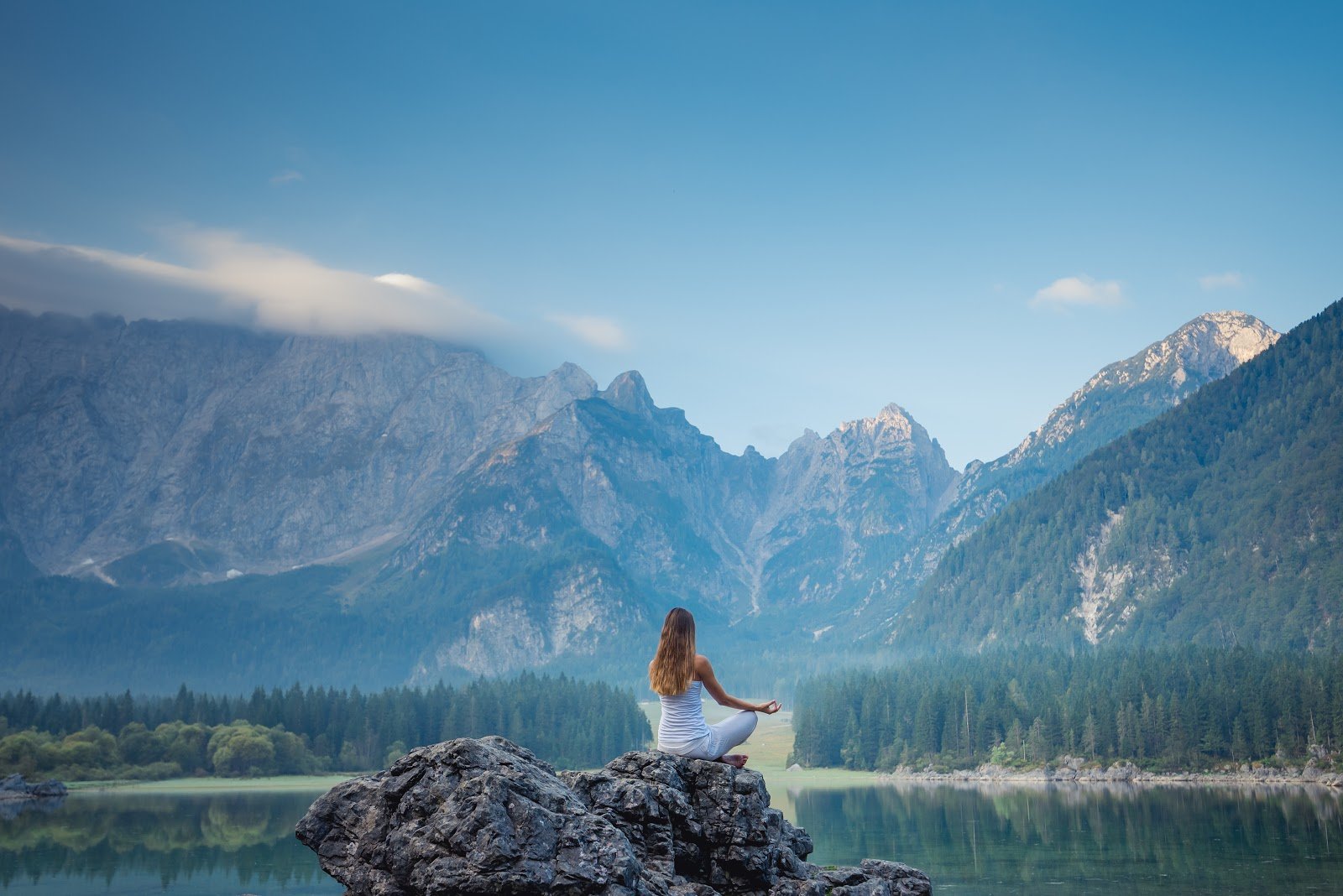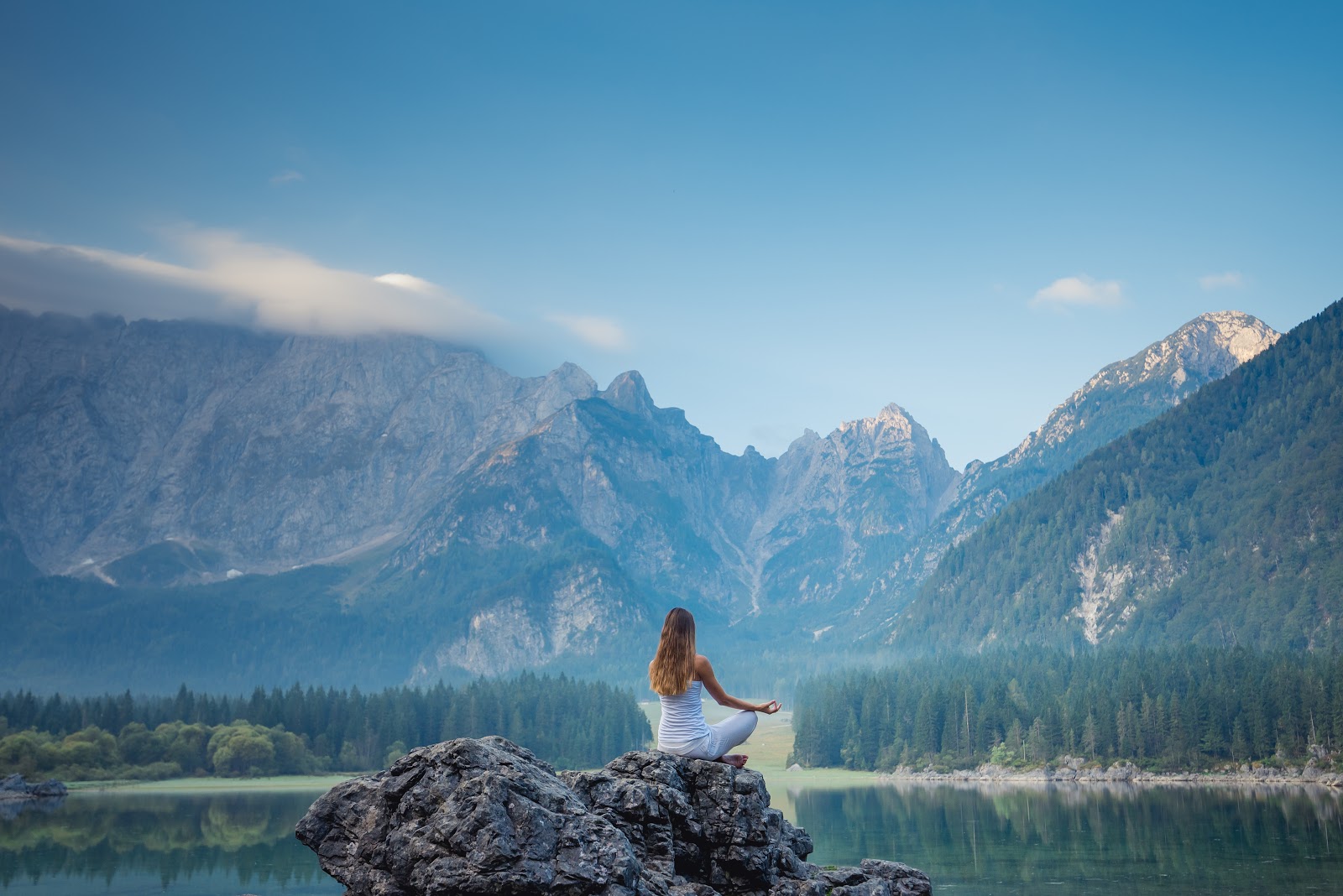The Influence of Indian Spirituality in the West
 Hindu Dharma has penetrated American culture[...] Philosophically, America has increasingly become a nation of Vedantists—and, in terms of spiritual practice, a nation of yogis.
Hindu Dharma has penetrated American culture[...] Philosophically, America has increasingly become a nation of Vedantists—and, in terms of spiritual practice, a nation of yogis.THE INFLUENCE OF INDIAN SPIRITUALITY IN THE WEST
In 2009, Newsweek magazine ran an article on religious trends in America. The headline read: WE ARE ALL HINDUS NOW. The writer, religion editor Lisa Miller, did not mean that millions of Americans were doing pujas instead of going to church, or hanging Ganeshas from their necks instead of crosses. Her opening sentence explained: “Recent poll data show that conceptually, at least, we are slowly becoming more like Hindus and less like traditional Christians in the ways we think about God, our selves, each other, and eternity.” Specifically, surveys showed that Americans had become far more accepting of other religions and other approaches to spirituality than they were in the past. The new attitude reminded Miller of the Rig Veda passage, ekam sat vipraha bahudha vadanti, which Americans usually translate as “Truth is one; the wise call it by many names.”
The article appeared as I was completing work on my book, American Veda: From Emerson and the Beatles to Yoga and Meditation, How Indian Spirituality Changed the West. I was pleased that a major news magazine verified what I had documented in the book. In fact, Hindu Dharma has penetrated American culture more deeply than Newsweek realizes, and in the six years since that article appeared, the evidence is even stronger. Philosophically, America has increasingly become a nation of Vedantists—and, in terms of spiritual practice, a nation of yogis. According to studies, the American world-view has changed in these ways: greater awareness of the unity that underlies the multiplicity of ordinary experience; acceptance of our own divine nature, as in tat tvam asi; less concern with religious dogma and more interest in spiritual experience.
These trends are complex and multifaceted. But exposure to India’s spiritual treasures has played a major, and probably the most important role. The transmission of Vedic wisdom from India to America has been going on for over 200 years, through a variety of means. Large numbers of people have studied with gurus, spent time in ashrams and read the Gita, the Upanishads and the Yoga Sutras. But many others have absorbed Vedic ideas and practices indirectly, through non-Indian sources, because the core insights of Vedanta and the principles and practices of Yoga have impacted psychology, medicine, the arts, literature, physics, neurobiology, theology and other areas of life. Because the teachings are universal, they have been embraced by those with secular and scientific outlooks as well as spiritual seekers.
The primary means of dissemination has been the long line of swamis, gurus and yogacharyas who came to the West, beginning with Swami Vivekananda in 1893. Most people in India know about his electrifying presence at the World’s Parliament of Religions in Chicago. But his impact was solidified in the following years, when he gathered students, wrote classic texts, gave hundreds of speeches (many transcribed into books) and established a teaching organization, the Vedanta Society, that continues to serve Americans to this day.
Other teachers followed, including swamis from the Ramakrishna Mission who taught Vedanta to thousands of Americans, including some of our most prominent thinkers. In 1920, Paramahansa Yogananda arrived and quickly became what the Los Angeles Times called “the first superstar guru of the 20th century.” He was the first emissary from India to make his home and international headquarters in America. His Self-Realization Fellowship continues to thrive, and his memoir, Autobiography of a Yogi, has inspired and informed millions since its publication in 1952.
In the late 1960s and 1970s, a parade of gurus burst on the scene, attracting mainly young seekers. Represent a variety of lineages and emphasizing different aspects of dharmic teachings, they included Swamis Satchidananda, Vishnudevananda, Muktananda and Rama, plus Srila Prabhupada, Bhagwan Sree Rajneesh (aka Osho), B.K.S. Iyengar, Pattabhi Jois and the most famous of all, Maharishi Mahesh Yogi. His Transcendental Meditation attracted enormous media coverage and scientific research, moving meditation from the fringes of society into the mainstream by the mid-1970s. Virtually all of the prominent gurus have since passed on, but they continue to change lives because of their successors and the organizations that carry on their work.
In addition, certain masters who never came to the West—Ramana Maharshi, Sri Aurobindo and Neem Karoli Baba, to name just three—have nevertheless had a big impact, thanks to individuals who propagated their teachings in America. And gurus continue to come to America, of course; the most popular today being Sri Sri Ravi Shankar and Mata Amritanandamayi (Amma).
The spread of Vedanta and Yoga also occurred through prominent Westerners who adapted the ideas and practices to their own fields of expertise and transmitted them to others, sometimes touching millions of minds and hearts. The disseminators include some of America’s greatest public thinkers, beginning in the 19th century with Ralph Waldo Emerson and Henry David Thoreau, who absorbed Vedic texts long before Swami Vivekananda’s arrival. They were followed by Madame Blavatsky (the founder of Theosophy) and others who started alternative spiritual movements. In the mid-20th Century, their ranks included Aldous Huxley, Christopher Isherwood, Joseph Campbell, Huston Smith. Other intellectuals followed suit, from Alan Watts in the 60s and 70s to Ken Wilber today.
Scientists from Nikola Tesla to Erwin Schrodinger to Robert Oppenheimer to Fritjof Capra also propagated Vedic ideas, and psychologists like Abraham Maslow and Richard Alpert (who became Ram Dass) fostered an East-West integration in the study of the mind and consciousness. Physicians such as Dean Ornish did the same in medicine, helping to legitimize meditation and other yogic practices in the field of healthcare.
Significantly, the transmission also came through artists. They include celebrated poets like Walt Whitman, T.S. Eliot and Allen Ginsberg; novelists Herman Hesse, Somerset Maugham and especially J.D. Salinger; and, in an extraordinary way, musicians. The great sitar master Ravi Shankar was the main catalyst; beginning in 1956 he penetrated the worlds of classical music, jazz and finally rock, when George Harrison of the Beatles studied with him. That association led directly to the Beatles—then the most famous celebrities in the world—taking up Transcendental Meditation and spending months at Maharishi Mahesh Yogi’s ashram in Rishikesh. This was a pivotal moment in the transmission of Vedic wisdom to the West, leading directly to the mainstream acceptance of meditation and hatha yoga.
Over time, the transmission from India to America has taken on different forms. In recent years, as is well known, the popular emphasis has been on asana-based practice, with studios popping up everywhere and hundreds of Americans being certified to teach. What has been called Modern Postural Yoga has become so mainstream that it threatens to obscure the deeper Yoga of the Gita and Patanjali. This is a challenge that concerns numerous Americans and Indians alike, and many are taking steps to protect the integrity of the yogic tradition.
Another unforeseen development has been the enormous interest in kirtan. Sometimes blending traditional mantras and musical motifs with Western instruments, kirtan wallahs who once played for ten or twenty people at a satsang now perform before hundreds, sometimes thousands. While some people attend kirtan sessions to have a good time, the number of sincere bhaktas should not be underestimated.
It is impossible to predict what forms the transmission will take in the future. It is, however, reasonable to expect that Vedantic ideas and yogic practices will spread deeper into American culture and the wisdom of the rishis will reach more people and find new applications. Americans tend to be rational, pragmatic people; when something holds up to scrutiny and proves to be valuable, they eventually adopt it, adapt it and assimilate it.
It is true, as many observers have noted, that some Americans appropriate dharmic ideas without honoring, or even acknowledging, the source. Those who care about the Vedic tradition must be aware of this problem and take steps to counteract it. That is one of the reasons I wrote American Veda. Fortunately, millions of Americans hold India and its traditions to be sacred; they feel profound gratitude for the rishis who realized the eternal truths of Sanatana Dharma and revealed them to the world. Increasingly, they are aware of the vital need to ensure that Vedic and yogic knowledge is adapted to American culture with discernment, to safeguard against their becoming diluted, corrupted or distorted. With vigilance, we can ensure that the Vedic transmission that began two centuries ago will continue to bless the American people. I hope that America can offer something of value to India in return for this great gift.



